South Sea Bubble
The South Sea Bubble Playing Cards were first published in London by Thomas Bowles in 1720. The cards bear satirical portrayals of the speculators involved in the South Sea Bubble of 1720, providing a unique contemporary record of the feverish atmosphere of the time, as well as the fashions of dress.
South Sea Bubble Playing Cards, 1720
The Original Stock Market Crash!
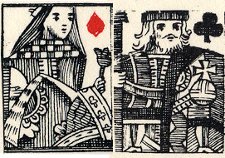
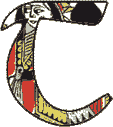 he South Sea Bubble Playing Cards were first published in London by Thomas Bowles in 1720. The cards bear satirical portrayals of the speculators involved in various commercial projects started during the South Sea Bubble of 1720, providing a unique contemporary record of the feverish atmosphere of the time, as well as the fashions of dress.
he South Sea Bubble Playing Cards were first published in London by Thomas Bowles in 1720. The cards bear satirical portrayals of the speculators involved in various commercial projects started during the South Sea Bubble of 1720, providing a unique contemporary record of the feverish atmosphere of the time, as well as the fashions of dress.
The cards were printed from copper plates, with the red suit symbols being applied later by stencil. The court cards contain interesting miniature versions of the standard full-length figures used on playing cards at the time. The backs are plain. A modern facsimile of the pack is part of a range published by Harry Margary.

Above: cards from the facsimile edition courtesy Giles de Margary. Click image to zoom. The cards provide a unique contemporary record of the feverish activities of traders in stock, by depicting in cartoon form a series of domestic situations which, although doubtless somewhat exaggerated, represented the atmosphere of the time. Extensive use is made of the balloon technique for reporting the speech of those portrayed and each card has a pithy, not to say in several instances coarse, verse describing the situation. Packs can be ordered directly from www.harrymargary.com
Three of Hearts: A Venetian lady, owning a Dutch pack of cards satirising the notorious Bubble schemes of c1720, invited one of the worst financial miscreants to play cards. The first card he turned up was the Three of Hearts and he left immediately, deeply offended.
By Simon Wintle
Spain • Member since February 01, 1996 • Contact
I am the founder of The World of Playing Cards (est. 1996), a website dedicated to the history, artistry and cultural significance of playing cards and tarot. Over the years I have researched various areas of the subject, acquired and traded collections and contributed as a committee member of the IPCS and graphics editor of The Playing-Card journal. Having lived in Chile, England, Wales, and now Spain, these experiences have shaped my work and passion for playing cards. Amongst my achievements is producing a limited-edition replica of a 17th-century English pack using woodblocks and stencils—a labour of love. Today, the World of Playing Cards is a global collaborative project, with my son Adam serving as the technical driving force behind its development. His innovative efforts have helped shape the site into the thriving hub it is today. You are warmly invited to become a contributor and share your enthusiasm.

Related Articles
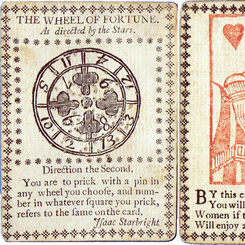
Fortune Telling playing cards
English Fortune Telling cards probably published c.1770.
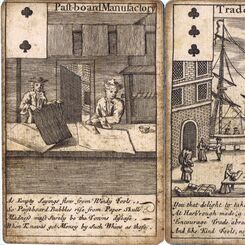
Bubble Cards, 1720
Bubble Cards - known as “All the Bubbles”, c.1720.

Arms of English Peers
The Arms of English Peers playing cards were first published in 1686. Heraldry, or a knowledge of th...

Origins Playing Cards
Rick Davidson's “Origins” playing cards is an inspired, present-day re-design of the standard Anglo-...
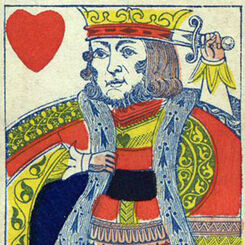
Suicide King
The King of Hearts, holding a sword behind his head, is sometimes nicknamed the “Suicide King”. He c...

William Warter
William Warter's Proverbial Cards, which carry illustrations of old English proverbs, were first pub...
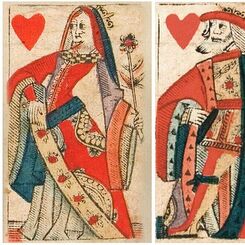
Pierre Marechal
Rouen became an important centre for card-making whose influence extended far afield. Cards from Rou...
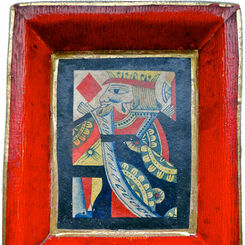
Pope Joan Trays
Some traditional Pope Joan boards comprise a circular tray, others are square, divided into sections...

Mathematical Instruments
Mathematical Instruments playing cards forming an instrument maker's trade catalogue, Thomas Tuttell...
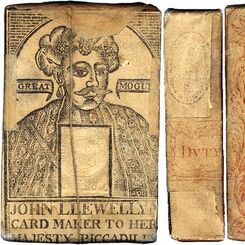
John Llewellyn, playing card manufacturer, London, 1778-1785
John Llewellyn, playing card manufacturer, London, 1778-1785

History of Court Cards
The court cards in English packs of playing cards derive from models produced by Pierre Marechal in ...

Hand-made Spanish Suited Playing Cards
Decks are made on two-ply pasteboard which reproduces the tactile quality of antique cards.

History of English Playing Cards & Games
The History of English Playing Cards dates probably from the mid 15th century

The Beggars’ Opera
The Beggars’ Opera Playing Cards were first published in 1728. The cards carry the words and music o...
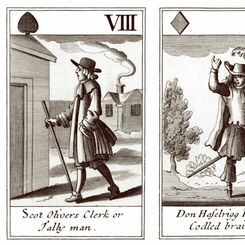
Knavery of the Rump, 1679
The Knavery of the Rump playing cards, first published in 1679, are a satirical portrayal of Oliver ...

Cries of London
The cards were printed from copper plates, with the red suit symbols being applied later by stencil....

Marlborough’s Victories
Marlborough’s Victories playing cards, first published in 1707, depict Marlborough's campaigns and t...

Hofamterspiel, c.1460
Hofamterspiel, c.1460

Hewson Replica Pack
Hand-made replica 17th century English playing cards, based on museum originals.

Woodblock and Stencil Playing Cards
Around 1987 I decided to make a pack of playing cards from woodblocks and coloured with stencils. I ...
Most Popular
Our top articles from the past 60 days






















